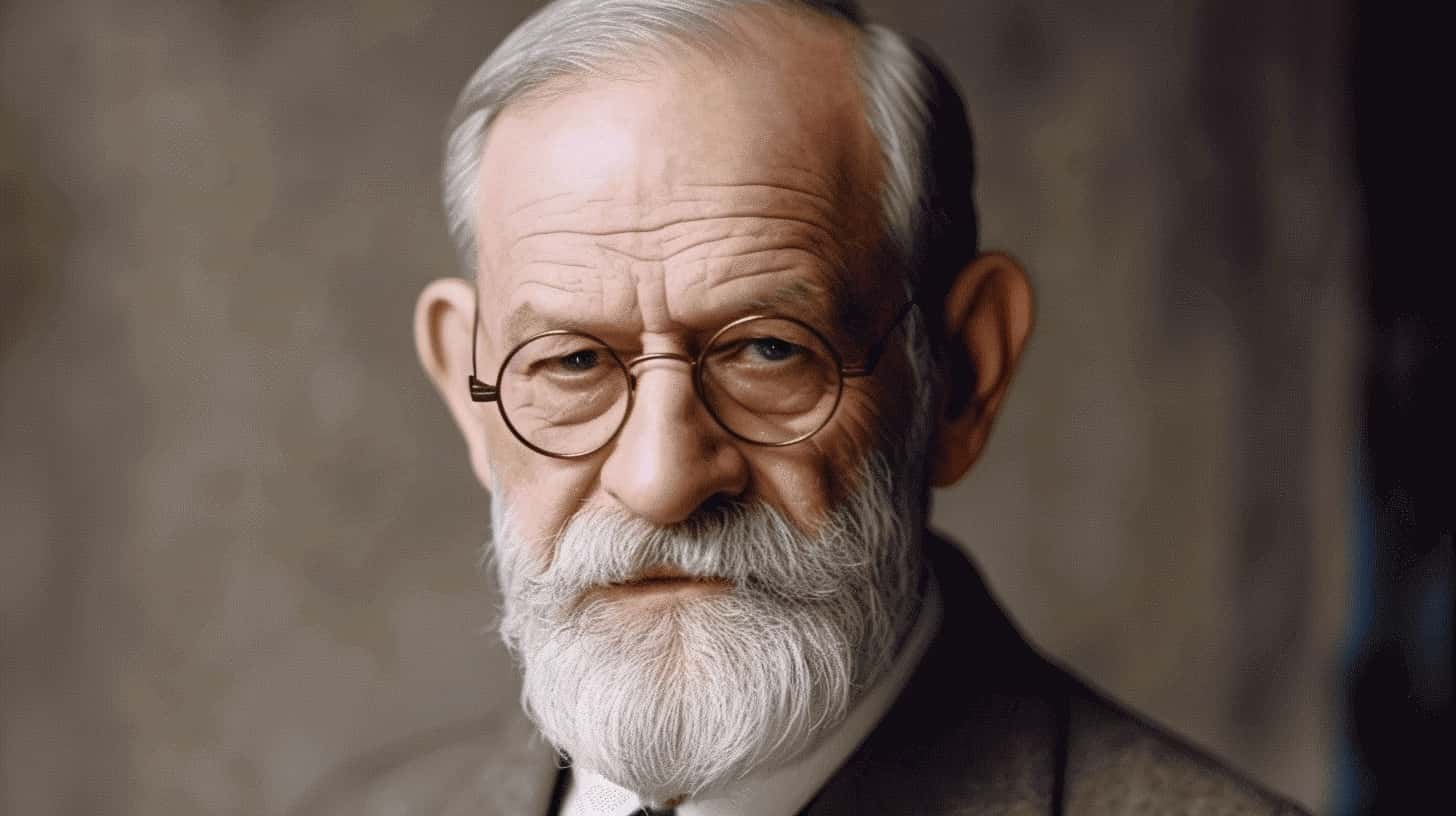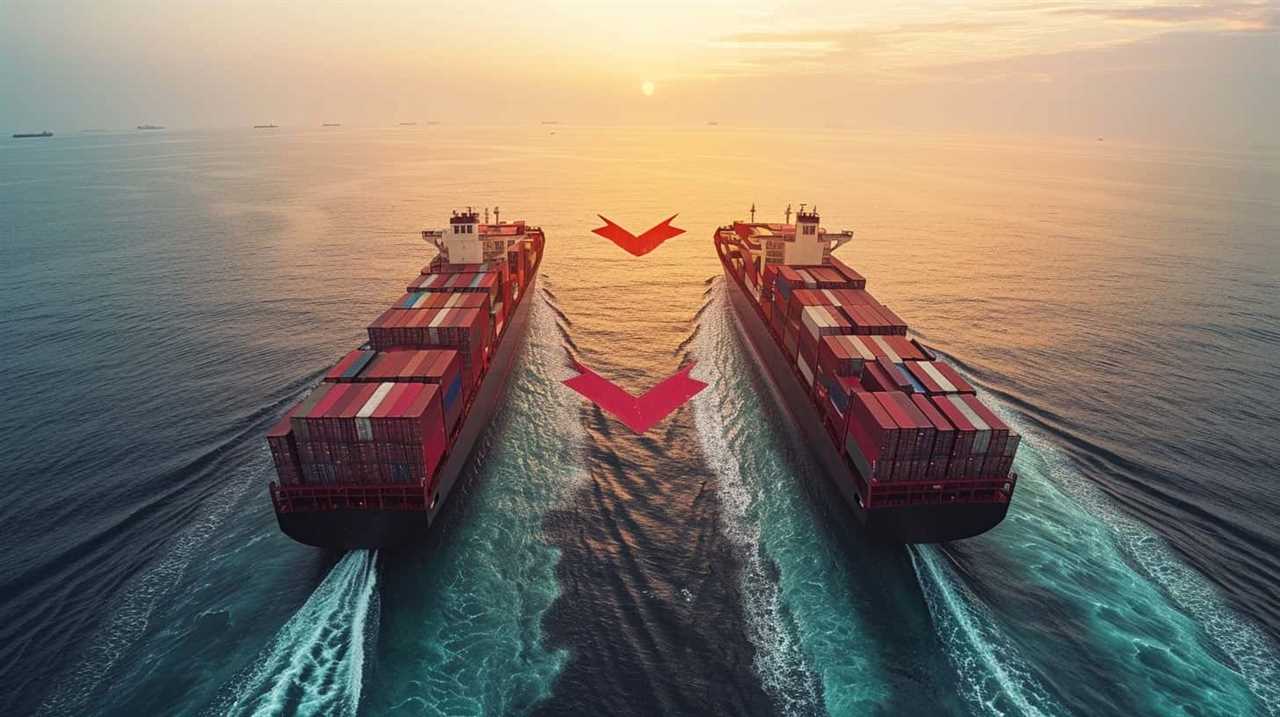As leaders in the journey towards advancement, we introduce to you 9 enlightenments from Thomas Mun regarding the balance of trade.
In this era of innovation, it is imperative to understand the dynamics of global trade. Mun, a visionary thinker, offers invaluable wisdom on the subject.
We explore the definition of trade balance, the significance of trade surpluses, and the repercussions of trade deficits. Mun’s perspective on export-led growth and his views on imports shed light on the intricacies of economic development.
Furthermore, we delve into the economic implications of imbalances, Mun’s theory on strategic industries, and his approach to tariffs and protectionism.

By examining Mun’s teachings, we can extract valuable lessons for shaping modern trade policies.
Join us as we embark on this enlightening journey into the world of trade balance.
Key Takeaways
- Trade balance, which is the difference between a country’s exports and imports, is important for economic prosperity.
- Trade deficits can lead to job losses, reduced output, hinder the development of domestic industries, and increase reliance on foreign borrowing and debt.
- Thomas Mun emphasized the importance of a positive trade balance for economic growth and suggested exporting more than importing to accumulate wealth.
- Economic diversification and removing trade barriers can mitigate risks, promote innovation, competitiveness, and stimulate economic growth.
Definition of Trade Balance
The definition of trade balance is the difference between a country’s exports and imports. It’s a crucial concept in understanding a nation’s economic performance and its role in the global market.
When a country exports more goods and services than it imports, it has a trade surplus. Conversely, when a country imports more than it exports, it has a trade deficit. While trade deficits are often portrayed negatively, they can actually play an important role in a country’s trade balance.

Imports are an essential component of trade balance because they reflect a country’s consumption and demand for foreign goods. They provide consumers with a broader range of choices and access to products that may not be available domestically. Additionally, imports can stimulate competition, leading to lower prices and improved quality for consumers. Importing goods also allows countries to focus on producing and exporting the goods and services in which they have a comparative advantage, leading to increased specialization and efficiency.
However, it’s crucial to manage trade deficits effectively to ensure long-term economic stability. Excessive reliance on imports can lead to job losses and a decline in domestic industries, which may undermine a country’s economic growth. Therefore, it’s important for governments to implement policies that promote domestic production and innovation while maintaining an open and competitive global trade environment.
Importance of Trade Surpluses
Now let’s delve into the importance of trade surpluses, as they hold significant implications for a nation’s economic well-being and global standing.
Trade surpluses occur when a country exports more goods and services than it imports, resulting in a positive trade balance. This surplus has several key benefits for the nation.

Firstly, a trade surplus contributes to economic growth. When a country exports more than it imports, it generates revenue and boosts domestic production. This increased production leads to job creation and higher wages, stimulating economic activity. Additionally, trade surpluses provide opportunities for innovation and technological advancements as companies strive to maintain a competitive edge in the global market.
Furthermore, trade surpluses enhance a nation’s global standing. Countries with trade surpluses are seen as economically strong and capable. They have the ability to invest in infrastructure, education, and research and development, further fueling their economic growth. This, in turn, attracts foreign investment and strengthens diplomatic relationships, amplifying their influence on the world stage.
In conclusion, trade surpluses play a crucial role in a nation’s economic well-being and global standing. They contribute to economic growth, job creation, and innovation, while also enhancing a country’s reputation and influence.
Now, let’s explore the impact of trade deficits in the subsequent section.

Impact of Trade Deficits
Let’s examine the consequences of trade deficits on a nation’s economy. Trade deficits occur when a country imports more goods and services than it exports.
While trade deficits can be caused by a variety of factors, such as differences in productivity or currency exchange rates, they can have significant impacts on domestic industries and the overall economy.
One of the consequences of trade deficits is the negative effect on domestic industries. When a country relies heavily on imports, its domestic industries may struggle to compete. This can lead to job losses and reduced output in sectors that are unable to compete with cheaper foreign goods. Additionally, trade deficits can lead to a decline in the development and innovation of domestic industries. Without the pressure to compete internationally, companies may become complacent and fail to invest in research and development, limiting their ability to grow and thrive.
Another consequence of trade deficits is the potential strain on the overall economy. Trade deficits can contribute to a decrease in the value of a country’s currency, which can lead to higher inflation and reduced purchasing power for consumers. Additionally, trade deficits can increase the country’s reliance on foreign borrowing, which can lead to higher levels of national debt and interest payments.

Mun’s View on Export-Led Growth
Mun’s view on export-led growth emphasizes the importance of a positive trade balance for economic prosperity. According to Mun, a country should focus on exporting more than it imports in order to accumulate wealth and strengthen its economy.
This perspective aligns with the concept of mercantilism, which dominated economic thinking during Mun’s time. By prioritizing exports, countries can generate income, create jobs, and stimulate domestic industries, leading to sustained economic growth.
Export-Driven Economic Growth
As we delve into the topic of export-driven economic growth, Thomas Mun’s insights provide valuable perspective on the role of exports in fostering economic development.
Mun believed that a country’s economic diversification is crucial for long-term growth and stability. By exporting a variety of goods and services, a nation can reduce its dependence on a single industry or market, mitigating risks associated with economic shocks and trade barriers.

Mun argued that a focus on exports promotes innovation and drives competitiveness, leading to increased productivity and higher living standards.
Furthermore, he emphasized the importance of removing trade barriers to facilitate the flow of goods and services across borders, enabling countries to tap into global markets and expand their export potential.
Mun’s views on export-led growth remain relevant today, as nations continue to pursue strategies that prioritize international trade as a driver of economic progress.
Mun’s Trade Balance Perspective
Our analysis of trade balance will shed light on Thomas Mun’s perspective on export-led growth. Mun’s trade balance analysis suggests that a positive trade balance, where exports exceed imports, is crucial for economic development and prosperity. He believed that a favorable trade balance leads to increased domestic production, employment, and income. To illustrate this perspective, let’s examine the trade balance implications of Mun’s view on export-led growth:

| Trade Balance Implications |
|---|
| – Increased exports stimulate economic growth by generating revenue and promoting domestic industries. |
| – A positive trade balance allows countries to accumulate wealth and invest in infrastructure, education, and innovation. |
| – Export-led growth can enhance a country’s competitiveness in the global market, fostering innovation and technological advancement. |
| – However, an overreliance on exports can make a country vulnerable to external shocks and fluctuations in global demand. |
Mun’s Perspective on Imports
We believe that understanding the perspective of Thomas Mun on imports is crucial in comprehending the complexities of trade balance.
Mun’s take on globalization was grounded in the belief that a nation’s wealth is determined by its ability to export more than it imports. He argued that imports should be limited in order to prevent trade deficits, which he viewed as harmful to a nation’s economic wellbeing.
Mun’s thoughts on trade deficits were influenced by the prevailing mercantilist ideology of his time. He believed that a positive trade balance, achieved by exporting more than importing, would lead to the accumulation of precious metals, such as gold and silver. These metals were considered the ultimate measure of wealth and power during that era. Mun saw imports as a drain on a nation’s wealth, as they required the outflow of precious metals to pay for them.
Transitioning into the subsequent section about the economic implications of imbalances, Mun’s perspective on imports highlights the importance of maintaining a favorable trade balance. However, it’s important to consider the modern context and the potential benefits that imports can bring, such as access to new technologies, resources, and consumer goods.

Balancing imports and exports is a complex task, and understanding the economic implications of imbalances is essential in formulating effective trade policies.
Economic Implications of Imbalances
The economic implications of imbalances can be understood by examining the consequences that arise when a nation’s imports consistently exceed its exports. Trade imbalances occur when a country imports more goods and services than it exports, leading to a negative trade balance. This has significant economic consequences that can affect various aspects of a nation’s economy.
One of the major economic consequences of trade imbalances is a decrease in domestic production and employment. When a country imports more than it exports, it means that domestic industries are unable to compete with foreign producers. This can lead to job losses in the domestic industries that are being outcompeted by cheaper imports. As a result, unemployment rates may rise, which can have a negative impact on the overall economy.
Another economic consequence of trade imbalances is a decrease in national income. When a country imports more than it exports, it means that it’s sending money abroad to pay for those imports. This leads to a decrease in the country’s national income, as money is flowing out of the economy. This can lead to a decrease in consumer spending and investment, which can further slow down economic growth.

Furthermore, trade imbalances can also lead to a buildup of foreign debt. When a country consistently imports more than it exports, it needs to borrow money from abroad to finance those imports. This can lead to a buildup of foreign debt, which can have long-term implications for a nation’s economy. High levels of foreign debt can make a country vulnerable to economic shocks and can limit its ability to invest in domestic industries.
Mun’s Theory on Strategic Industries
One important aspect to consider when examining the economic implications of imbalances is the theory proposed by Thomas Mun on strategic industries. Mun argued that certain industries play a crucial role in a nation’s economic development and competitiveness. These industries, known as strategic industries, are characterized by their ability to generate high value-added products, create employment opportunities, and contribute to technological advancements.
According to Mun, trade imbalances can have significant implications for strategic industries. When a country consistently runs a trade deficit in these industries, it becomes dependent on imports and risks losing its competitive edge. This can lead to a decline in domestic production, loss of jobs, and a decrease in technological innovation.
On the other hand, a trade surplus in strategic industries can be beneficial for a nation’s economy. It allows the country to export high-value products, generate revenue, and create a favorable trade balance. This, in turn, promotes economic growth, job creation, and technological progress.

In order to maintain a strong position in strategic industries, countries need to implement policies that support domestic production, encourage innovation, and foster a skilled workforce. Additionally, strategic industries should be identified and prioritized based on their potential to drive economic growth and enhance national competitiveness.
Mun’s Approach to Tariffs and Protectionism
Mun’s approach to tariffs and protectionism was based on his belief that government intervention in trade could be beneficial for the domestic economy. He recommended the use of tariffs to protect strategic industries and promote domestic production. Mun argued that by imposing tariffs on imported goods, the government could create a level playing field for domestic producers and stimulate economic growth.
However, it’s important to note that protectionist measures can have unintended consequences, such as retaliatory tariffs and reduced competition, which may ultimately harm the overall economy.
Mun’s Tariff Recommendations
We believe that Thomas Mun’s approach to tariffs and protectionism offers valuable insights into trade balance. Mun was a strong advocate for the use of tariffs as a means to promote domestic industries and ensure a favorable trade balance. He argued that a country should focus on exporting more than it imports in order to achieve economic growth. Mun’s tariff recommendations aimed to protect domestic industries from foreign competition and stimulate export-led growth. By imposing tariffs on imported goods, Mun believed that domestic industries would be able to compete more effectively and increase their production and exports. This approach aligns with the concept of export-led growth, which emphasizes the importance of promoting exports as a driver of economic development.

| Tariff Recommendations | Benefits | Drawbacks |
|---|---|---|
| Imposing tariffs on imported goods | Protects domestic industries, stimulates export-led growth | May lead to retaliation from trading partners, higher prices for consumers |
| Encouraging exports through subsidies and incentives | Boosts domestic production and employment, increases foreign exchange earnings | Can distort market prices, may create dependency on exports |
| Implementing import quotas | Protects domestic industries, reduces trade deficit | Can lead to scarcity of certain goods, may invite smuggling |
| Promoting fair trade practices through international agreements | Ensures a level playing field for all countries, minimizes trade disputes | Requires international cooperation, may limit policy flexibility |
Mun’s tariff recommendations were based on the belief that a country’s economic success depends on its ability to maintain a favorable trade balance. While his approach may have some drawbacks, it highlights the importance of protecting domestic industries and promoting export-led growth as key strategies for achieving long-term economic prosperity.
Effects of Protectionism
Continuing from our previous discussion on tariff recommendations, let’s now explore the effects of protectionism, specifically focusing on Thomas Mun’s approach to tariffs and protectionism.
Mun believed that protectionist policies could have negative consequences for trade balance and overall economic growth. Here are three key effects of protectionism to consider:
- Reduced competition: Protectionism often leads to limited competition, as domestic industries are shielded from international competition. While this may initially protect domestic industries, it can hinder innovation and efficiency in the long run.
- Higher prices for consumers: Protectionist measures such as tariffs can result in higher prices for imported goods. This can be detrimental to consumers, who may have to pay more for the same products or may have limited choices.
- Retaliation from trading partners: Protectionist policies can trigger retaliation from trading partners, leading to trade wars and further disruptions in international trade.
Understanding these effects, it’s important for policymakers to consider the potential negative consequences of protectionism when designing trade policies.

Now, let’s delve into the lessons we can learn from Thomas Mun for modern trade policies.
What Are the Key Concepts of Trade Balance in Thomas Mun’s Insights on Mercantilism?
Thomas Mun’s best insights on mercantilism revolve around the key concepts of trade balance. He emphasizes the importance of exporting more than importing to achieve a favorable balance of trade. Mun also highlights the significance of accumulating precious metals and ensuring a surplus in the balance of trade for economic prosperity.
Lessons From Mun for Modern Trade Policies
Drawing upon the insights of Thomas Mun on trade balance, we can glean valuable lessons for crafting effective modern trade policies. Mun’s ideas, although formulated in the 17th century, still hold relevance in today’s globalized economy. One important lesson is the significance of export-led growth in driving economic development. Mun argued that a country should focus on producing goods for export, as it not only brings in foreign exchange but also stimulates domestic industries and creates employment opportunities. This principle aligns with modern trade policies that prioritize boosting exports to foster economic growth.
To illustrate the importance of export-led growth, we can examine the experiences of two countries: Country A and Country B. In the table below, we compare their trade balances, gross domestic product (GDP), and employment rates over a five-year period.
| Country | Trade Balance (in millions) | GDP (in billions) | Employment Rate |
|---|---|---|---|
| Country A | $500 | $100 | 10% |
| Country B | -$200 | $80 | 7% |
As the data shows, Country A, with a positive trade balance, experiences higher GDP and employment rates compared to Country B, which has a negative trade balance. This underscores the importance of a favorable trade balance and export-led growth in driving economic prosperity.

Frequently Asked Questions
How Does Trade Balance Affect a Country’s Overall Economic Growth?
The trade balance impact on a country’s overall economic growth is significant. A positive trade balance can stimulate economic growth by increasing exports, attracting foreign investment, and creating jobs, while a negative trade balance can hinder growth by draining domestic resources and increasing debt.
What Are the Potential Consequences of a Consistently Large Trade Deficit?
Potential consequences of a consistently large trade deficit can hinder economic growth. We may face reduced domestic production, job losses, and dependence on foreign countries for essential goods. These challenges impede innovation and hinder our progress.
Does Thomas Mun Advocate for Completely Eliminating Imports to Achieve a Trade Surplus?
Eliminating imports completely to achieve a trade surplus is not advocated by Thomas Mun. Instead, he emphasizes the importance of a balanced trade and highlights the benefits of a favorable trade balance for economic growth and stability.
How Does Thomas Mun’s Theory on Strategic Industries Relate to the Current Global Economy?
In today’s global economy, strategic industries play a crucial role in determining a country’s global competitiveness. For example, investing in renewable energy can enhance both economic growth and environmental sustainability.

Are There Any Specific Examples of Countries Successfully Implementing Thomas Mun’s Trade Policies in Modern Times?
Examples of countries successfully implementing Thomas Mun’s trade policies in modern times include Singapore, which strategically focused on developing its port and trade infrastructure, and South Korea, which prioritized industries like electronics and automobiles. These success stories demonstrate the effectiveness of Mun’s theories in driving economic growth.
Conclusion
In conclusion, Thomas Mun’s insights on trade balance shed light on the importance of maintaining trade surpluses and the potential economic implications of trade deficits. His perspective on export-led growth and the role of strategic industries provides valuable lessons for modern trade policies.
Additionally, Mun’s approach to tariffs and protectionism highlights the need for careful consideration of trade policies to ensure balanced economic growth.
Overall, Mun’s theories and ideas provide a data-driven and objective framework for understanding and managing trade imbalances.

Lauren’s talent in writing is matched by her passion for storytelling. Her love for books and deep understanding of culture and entertainment add a distinct flavor to her work. As our media and press contact, Lauren skillfully bridges the gap between afterQuotes and the broader media landscape, bringing our message to a wider audience.










